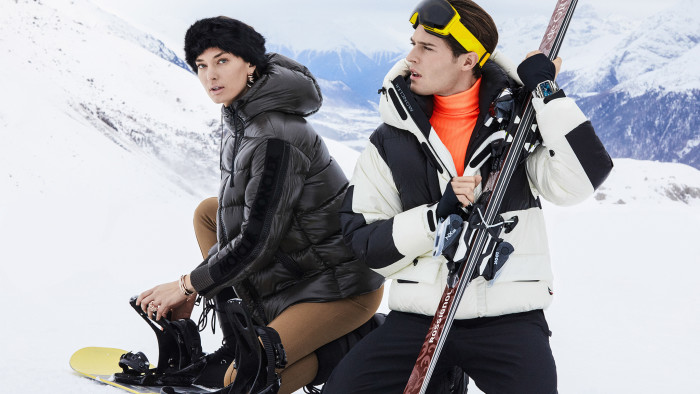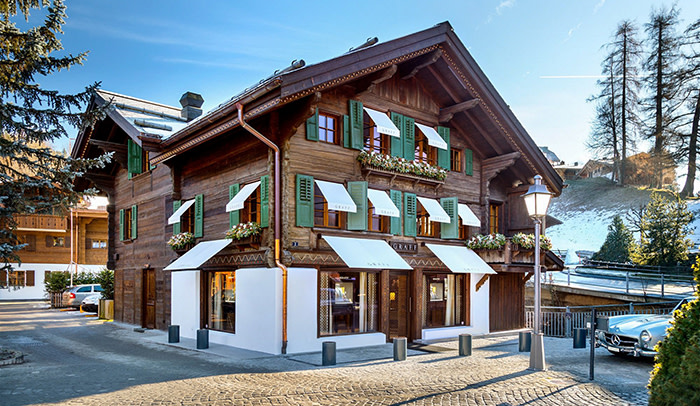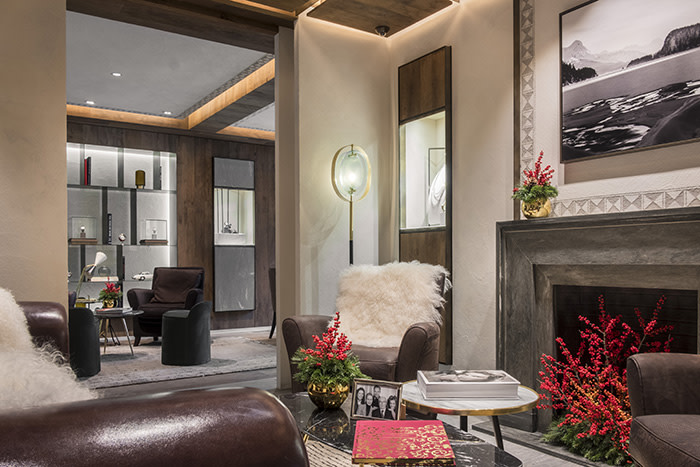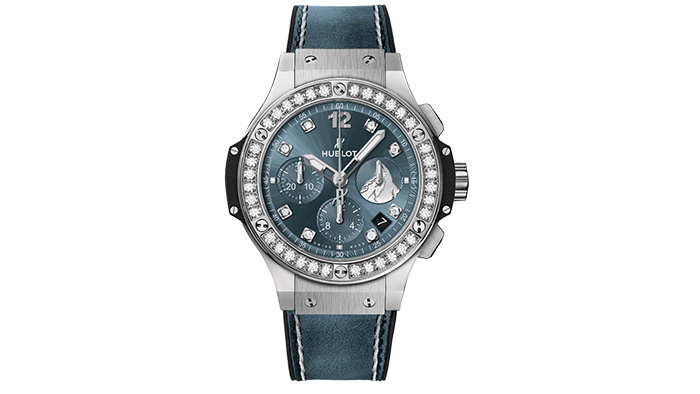When going downhill is good for business

Roula Khalaf, Editor of the FT, selects her favourite stories in this weekly newsletter.
Nestled among the brilliant-white powdery peaks in the Alpine ski resorts of Gstaad, St Moritz and Courchevel lie many of the world’s top luxury boutiques, all eager to capitalise on the resorts’ well-heeled visitors, who arrive in droves to enjoy the winter season.
“We have to now follow our clients wherever they go on earth,” says Matthieu Brichet, the European chief executive of jeweller and watchmaker Graff, which has a presence in all three resorts: two boutiques in Gstaad, one in Courchevel and a pop-up store in St Moritz.
“In a very concentrated area you can find the best clientele in the world. We have to be in the right places where they’re spending their time.”
Competition, therefore, is fierce as established and emerging brands jostle for the attention of affluent tourists, using ski boutiques to broaden their customer base.
The stores are “really profitable”, says Mr Brichet, despite the relatively short season, which generally runs from December to April. Sales concentration is high: revenue over three to four weeks in a ski resort is comparable to two to three months’ sales in Graff’s city flagship, he explains.

Such clients are, after all, “globetrotters, jet-setters and trendsetters”, says Costán Eghiazarian, founder and creative director of the Austrian jeweller Aenea. “They buy beautiful things because there they can show and wear it.”
For the past three years, Aenea has hosted a four-day jewellery exhibition in Gstaad, which this year was held at the five-star Le Grand Bellevue hotel. It showed 60 pieces ranging from a €590 gold eternity ring to an exceptional ring set with a 7.41ct old-cut diamond with an unusual purple fluorescence, priced at around $500,000.
Mr Eghiazarian notes that the Gstaad clientele are sophisticated jewellery buyers who are quick to make a purchase. “It’s a combination of knowledge and petty cash,” he says. “They understand, enjoy — and also they can.”
Ski resorts are a “vital” way to connect directly with the tourist market, says Raynald Aeschlimann, president and chief executive of Omega — official timekeeper for the International Bobsleigh and Skeleton Federation, as well as the Olympic Games. The watchmaker has boutiques in Switzerland’s Zermatt and Crans-Montana where, Mr Aeschlimann says, Omega has “very strong sales” during the winter season.
Asian tourists visiting Switzerland are a growing part of the pie too, he notes. “They like to take advantage of the competitive prices of our watches and, of course, buy an Omega directly from its home in Switzerland,” he says.
The winter season throws up opportunities for big marketing campaigns around Valentine’s Day and International Women’s Day, as well as Chinese new year, as visitor numbers peak. According to the Swiss Tourism Federation, tourists from China are the fourth-largest group of visitors to the country, with more than 50m a year. In 2017, Chinese tourists contributed $32.6bn in receipts for the country.
The retail atmosphere in ski resorts can be very relaxed compared with city flagships. “They stop by the store just to have a hot chocolate with you and talk about the day,” says Mr Brichet.

In Chopard’s case, conversation happens over fine wine and spirits. The Geneva-headquartered jeweller last year relaunched a chalet-style store on St Moritz’s luxury shopping street, Via Da Vout, where it offers a personal selection of whisky and wine belonging to Chopard’s owners, the Scheufele family.
Brands’ association with the glamour of winter sports has proved a rich seam for marketing opportunities.
Watchmaker Richard Mille, which has a boutique in Courchevel, sponsors two alpine racers: skier Alexis Pinturault and Ester Ledecka, the only woman to have won gold in both skiing and snowboarding at the same Winter Olympic Games (Pyeongchang 2018).
Watch brand Oris this year unveiled three new models, including a vintage-style 43mm Divers Sixty-Five chronograph, at a press event that it holds each year in Zermatt and Colorado resort Vail.
Meanwhile jeweller De Grisogono — which has boutiques in Gstaad, St Moritz and a pop-up store in Courchevel — launched its #attitudewithaltitude campaign across social media and print, featuring glossy photo shoots in beautiful mountain settings.
Have-it-all holidaymakers who are primed and eager to spend means bigger-ticket, exceptional pieces feature as standard across the mountain boutiques, notes Hublot’s chief executive Ricardo Guadalupe.
“People in ski resorts have everything,” he says. “If you don’t have the latest limited edition or special series, they will not buy it. They are looking for something that does not exist where they live.”
Hublot — which has official partnerships with, and boutiques in, Courchevel and Zermatt — has created limited edition, alpine-themed watches. The Big Bang Chronograph Zermatt with a slate and carbon fibre bezel is designed to evoke the Matterhorn, and a special Big Bang Unico Alps series is only available in the mountains.

This year Hublot expanded to the North American resort of Aspen in Colorado, where Mr Guadalupe says increasing numbers of Asian tourists are skiing. “In skiing we look to being present in places which are popular, trendy and fashionable,” he says.
Indeed, mapping the movements of affluent Chinese tourists could provide luxury ski retail’s next big jump.
Comments